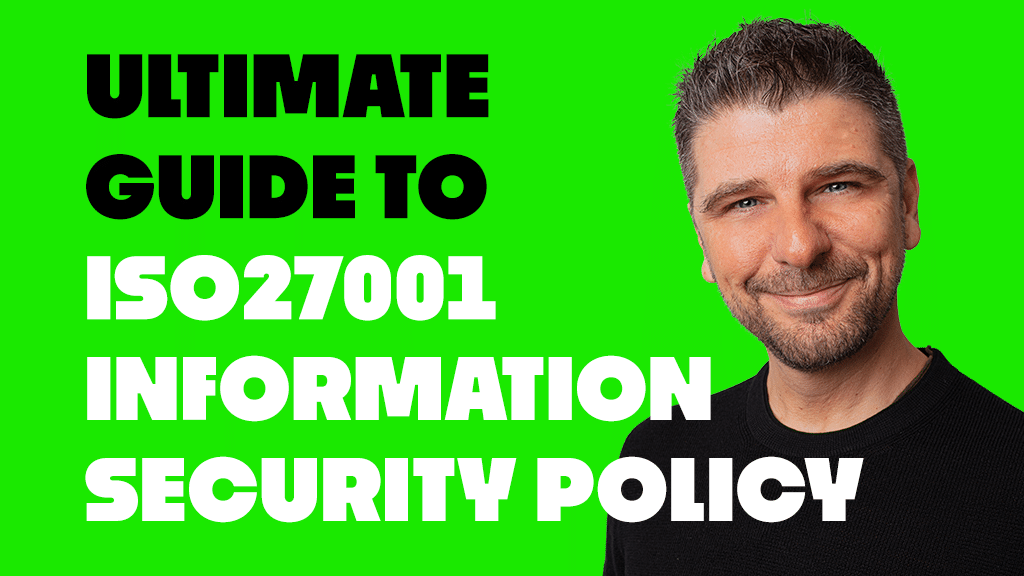Table of contents
- Introduction
- What is the ISO 27001 Information Security Policy?
- How to write an ISO27001:2022 Information Security Policy
- How does it work?
- ISO 27001 Information Security Policy Template
- ISO 27001 Information Security Policy PDF Example
- Why is an information security policy important?
- How can I create an information security policy?
- How to implement an information security policy?
- ISO 27001 Information Security Policy Framework
- How to write an ISO 27001 Information Security Policy
- Information Security Policy Mapped to ISO 27001
- ISO 27001 Information Security Policy FAQ
Introduction
In this ultimate guide I show you everything you need to know about the ISO 27001 information security policy. Exposing the insider trade secrets, giving you the templates that will save you hours of your life and showing you exactly what you need to do to satisfy it for ISO 27001 certification. I show you exactly what changed in the ISO 27001:2022 update. I am Stuart Barker the ISO 27001 Ninja and this is the ISO 27001 information security policy
What is the ISO 27001 Information Security Policy?
The information security policy is a high level policy that sets out what the management approach of the organisation is. It includes some key elements such as management and leadership buy in. As a stand alone document it can be shared with staff to explain what they should be doing and with customers and potential customers to assure them you are doing the right thing.
How to write an ISO27001:2022 Information Security Policy
The ISO27001 standard was updated in 2022 and this guide shows you how to write an Information Security Policy to meet the requirements of the updated standard.
You can learn more by reading: How to implement ISO27001 Clause 5.2 Policy and Pass the Audit
How does it work?
You are going to have a pack of policies that are required by ISO 27001. This makes good, practical sense for a governance framework. It could all be in one document but there are practical benefits to having separate policies. By having separate policy documents, they are:
- easy to communicate and to share with the people they are relevant to
- easy to assign an owner who will keep it up to date and implement it
- easy to review and sign off
ISO 27001 Information Security Policy Template
Designed to save hours of work and prewritten and fully populated the ISO 27001 Information Security Policy Template meets the requirements of ISO 27001 and other leading frameworks.
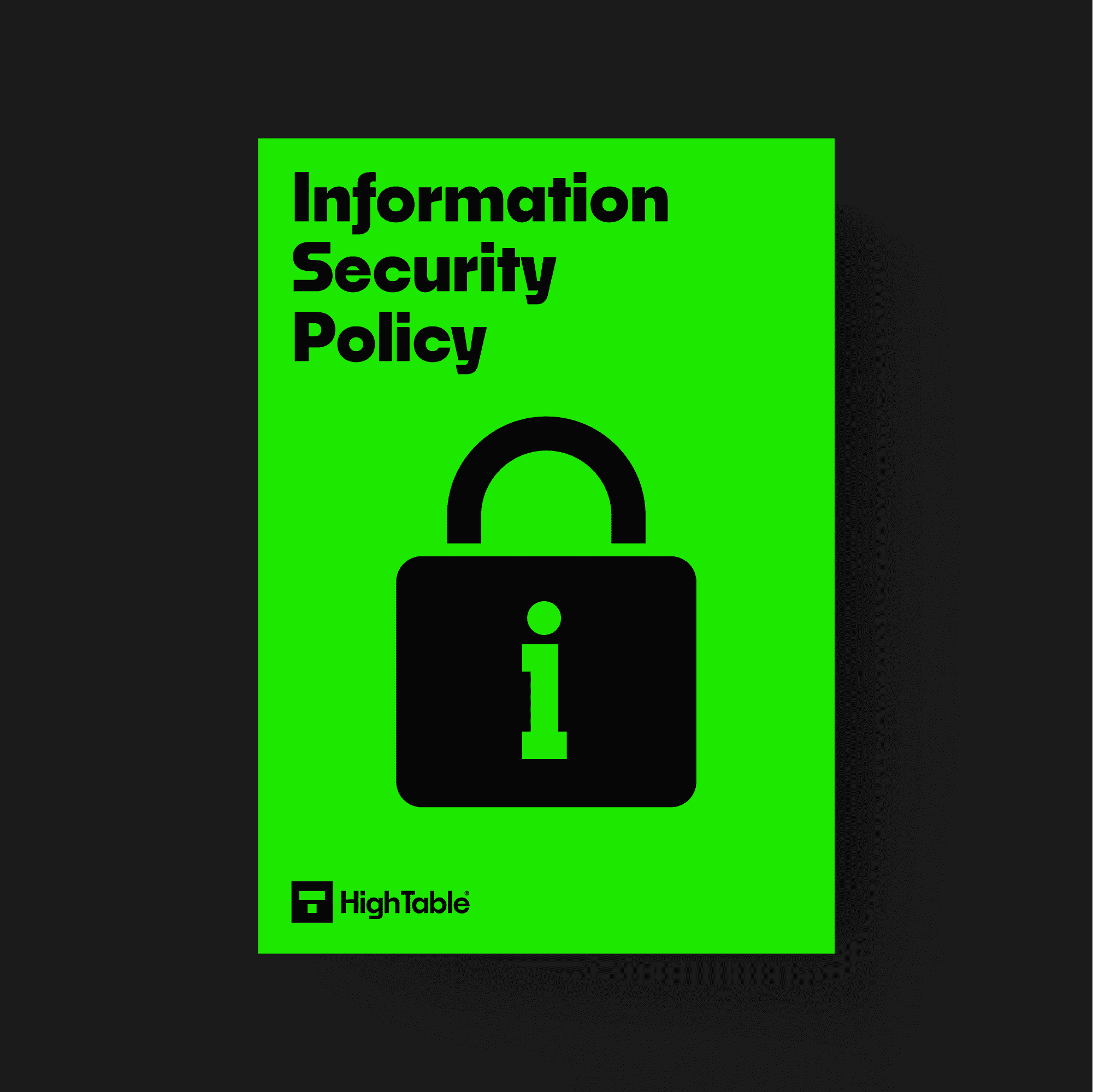
ISO 27001 Information Security Policy PDF Example
The 2022 Updated Edition ISO27001 Information Security Policy Example PDF.
Below is an example ISO27001 Information Security Policy extract of the contents page so you know what to include.
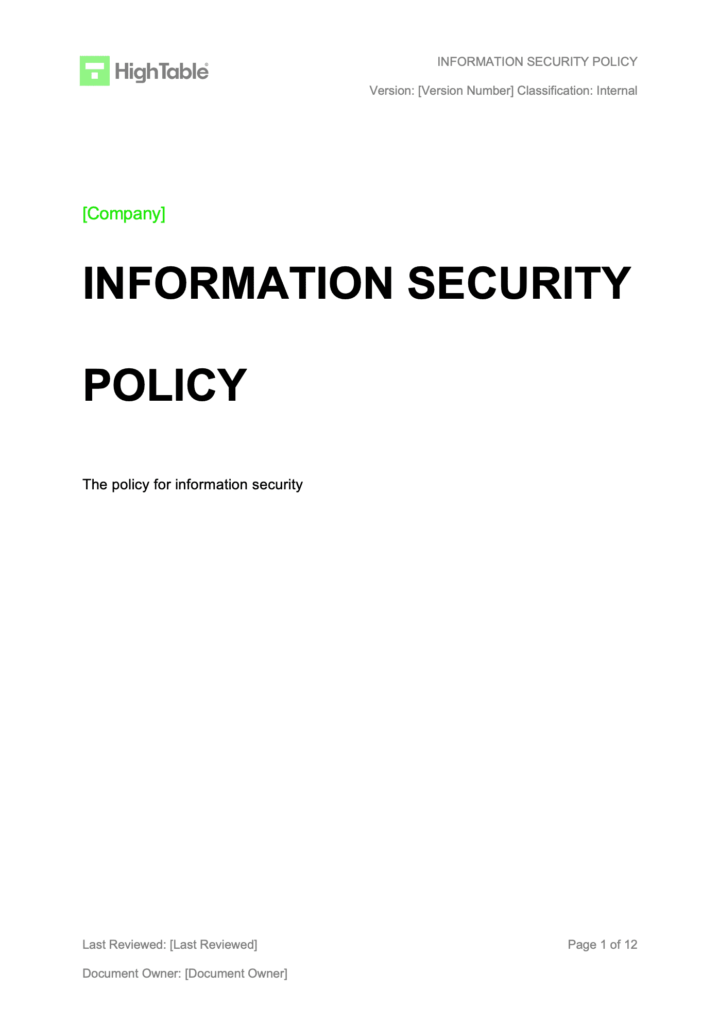
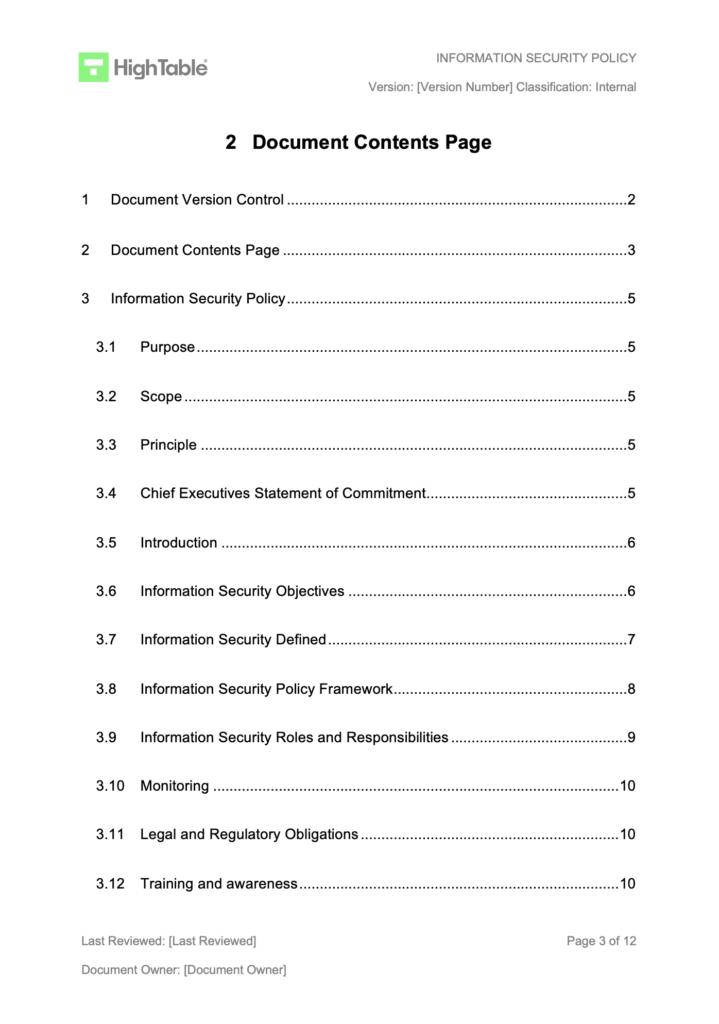
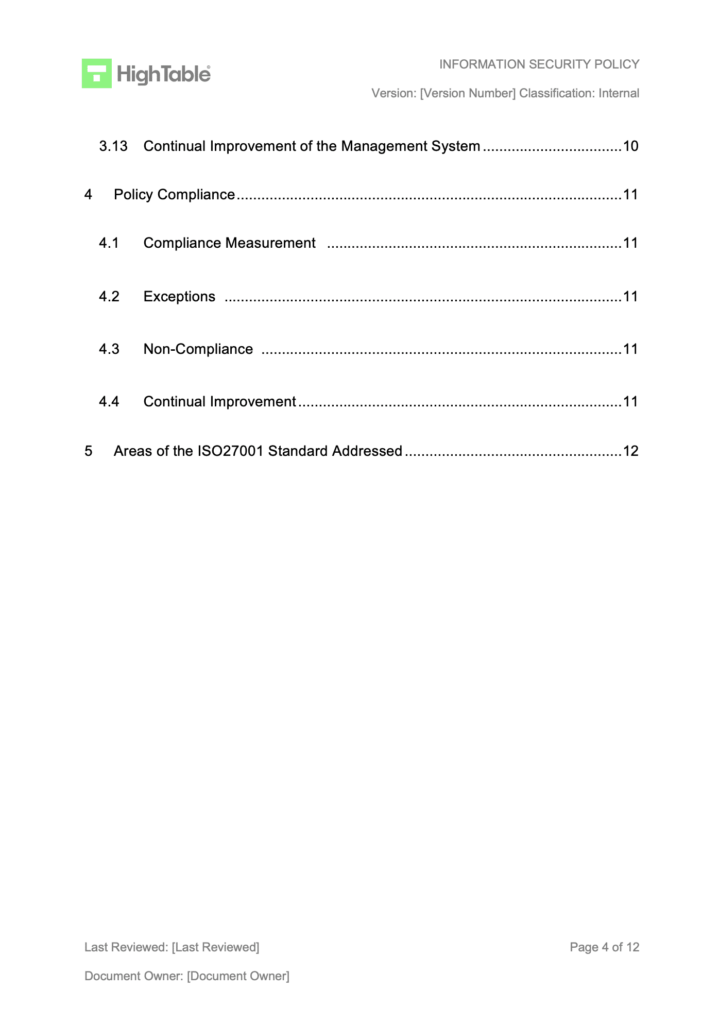
Why is an information security policy important?
An information security policy is important because your organisation processes, stores and transmits valuable data and information. To understand the value of an information security policy, let’s break out the data we are protecting into three parts.
Customer Data: what ever your product or service, you are going to be handling customer data of some description. It could be customer personal information, order information, technical information. What is fundamental is that your customer cares deeply about that information. They also care about how you are taking care and protecting it.
Employee Data: you have employees and you have their most private and personal information. It is likely that you have names, address, bank details, social security and tax information, sickness information, performance data, pension information and more. Your employees care deeply about the protection of their most private information.
Company Data: you have financial data relating to your performance, you have customer databases and CRM, you potentially have intellectual property or secrets about the way you conduct business. Your owners care a lot about protecting this to protect their profits.
How can I create an information security policy?
The easiest way to create and information security policy is to download and information security policy template and tailor it your organisation. By downloading a trusted template most of the hard work has been done for you.
This video on How To Create An Information Security Policy has been viewed over 13,000 times. If you are doing it yourself watch and learn step by step how to create an information security policy in under 5 minutes.
How to implement an information security policy?
An information security policy is a document that is created by the organisation. Usually created in Microsoft Word with the final version saved as a PDF. It will be based on best practice such as the ISO 27001 the international standard for information security. It will have key common elements within it that are standard across every organisation. The information security policy will be approved by senior management and then shared with employees to let them know what is expected of them. It may form part of annual employee training. The policies will be reviewed, updated and reissued at least annually. As part of most customer tenders and bids you will be asked for a copy of your information security policy and it will be shared with them.
ISO 27001 Information Security Policy Framework
The information security management system is built upon an information security policy framework. In conjunction with this policy, the following policies make up the policy framework:
- Data Protection Policy
- Data Retention Policy
- ISO 27001 Information Security Policy ( this policy )
- ISO 27001 Access Control Policy
- ISO 27001 Asset Management Policy
- ISO 27001 Risk Management Policy
- ISO 27001 Information Classification and Handling Policy
- ISO 27001 Information Security Awareness and Training Policy
- ISO 27001 Acceptable Use Policy
- ISO 27001 Clear Desk and Clear Screen Policy
- ISO 27001 Mobile and Teleworking Policy
- ISO 27001 Business Continuity Policy
- ISO 27001 Backup Policy
- ISO 27001 Malware and Antivirus Policy
- ISO 27001 Change Management Policy
- ISO 27001 Third Party Supplier Security Policy
- ISO 27001 Continual Improvement Policy
- ISO 27001 Logging and Monitoring Policy
- ISO 27001 Network Security Management Policy
- ISO 27001 Information Transfer Policy
- ISO 27001 Secure Development Policy
- ISO 27001 Physical and Environmental Security Policy
- ISO 27001 Cryptographic Key Management Policy
- ISO 27001 Cryptographic Control and Encryption Policy
- ISO 27001 Document and Record Policy
How to write an ISO 27001 Information Security Policy
Time needed: 4 hours and 30 minutes
How to write an information security policy
- Create your version control and document mark-up
ISO 27001 documents require version control of the author, the change, the date and the version as well as document mark up such as document classification.
- Write the document purpose
Write the purpose of the document. The purpose of this policy is to protect against loss of data.
- Write the scope of the policy
Consider the scope of the information security policy. It should really apply to all employees and third party staff working for your company.
- Write the principle on which the policy is based
The principle of the policy is the confidentiality, integrity and availability of data. It is about the security and protection of of confidential data.
- Write a chief executives statement of commitment
Write a statement from the most senior person in the organisation about the organisations commitment to information security. Provide a date for the quote.
- Define information security
Provided a definition for information security and for the terms confidentiality, integrity and availbabilty.
- Describe the policy framework
Provide a description of the policy framework and the policies that are part of it.
- Set out the roles and responsibilities
Create a definition of each of the roles for information security and what their responsibilities are.
- Describe how you will monitor the effectiveness of information security
Layout the measures and monitors that you will use to verify that the information security is effective.
- Document your legal and regulatory obligations
Working with legal counsel set out the laws and regulations that your organisation follows
- Define policy compliance
Provide for how compliance to the policy will be acheived.
Information Security Policy Mapped to ISO 27001
Let’s map the information security policy template to each version of the ISO 27001 standards.
ISO 27001:2022
ISO 27001:2022 Clause 5 Leadership
ISO 27001:2022 Clause 5.1 Leadership and commitment
ISO 27001:2022 Clause 5.2 Policy
ISO 27001:2022 Clause 6.2 Information security objectives and planning to achieve them
ISO 27001:2022 Clause 7.3 Awareness
ISO 27002:2022
ISO 27002:2022 Clause 5 Organisational Controls
ISO 27002:2022 Clause 5.1 Policies for information security
ISO 27002:2022 Clause 5.36 Compliance with policies, rules, and standards for information security
ISO 27002:2022 Clause 5.4 Management Responsibilities
ISO 27002:2022 Clause 6 People Controls
ISO 27002:2022 Clause 6.3 Information security awareness, education, and training
ISO 27002:2022 Clause 6.4 Disciplinary process
ISO 27001:2013/17
ISO 27001:2013/2017 Clause 5 Leadership
ISO 27001:2013/2017 Clause 5.1 Leadership and commitment
ISO 27001:2013/2017 Clause 5.2 Policy
ISO 27001:2013/2017 Clause 6.2 Information security objectives and planning to achieve them
ISO 27001:2013/2017 Clause 7.3 Awareness
ISO 27002:2013/17
ISO 27002:2013/2017 Clause 5 Information security policies
ISO 27002:2013/2017 Clause 5.1 Management direction for information security
ISO 27002:2013/2017 Clause 5.1.1 Policies for information security
ISO 27002:2013/2017 Clause 5.1.2 Review of the policies for information security
ISO 27002:2013/2017 Clause 7 Human resource security
ISO 27002:2013/2017 Clause 7.2.1 Management Responsibilities
ISO 27002:2013/2017 Clause 7.2.2 Information security awareness, education, and training
ISO 27002:2013/2017 Clause 7.2.3 Disciplinary process
ISO 27001 Information Security Policy FAQ
The purpose of the policy is to set out the information security policies that apply to the company to protect the confidentiality, integrity and availability of data.
The scope of the policy is all employees and third-party users. This includes permanent staff, contractors, consultants and third party supplier employees working for your business.
Information security is managed based on risk, legal and regulatory requirements and business need.
Yes. Having a statement in the policy from the Chief Executive is a good way to record leadership commitment.
An information security policy sets out what you do for information security. It covers the what you do not how you do it. How you do it is covered in process, procedure and operating documents. It sets a clear direction for the organisation.
Yes. An Information Security Policy is a key requirement of ISO 27001 forming part of ISO 27001 and ISO 27002 / Annex A.
A copy of the information security policy template and best practice can be found here: https://hightable.io/product/information-security-policy-template/
Access to information is to those with appropriate authority.
The right people with the right access.
Information is complete and accurate
The right people with the right access to the right data.
Information is available when it is needed
The right people with the right access to the right data at the right time.
CIA is the Confidentiality, Integrity and Availability of data.
Yes, it is a required element of the ISO 27001 certification.
An information security management policy covers the following as a minimum:
Document Version Control
Document Contents Page
Purpose
Scope
Information Security Policy
Principle
Chief Executives Statement of Commitment
Introduction
Information Security Defined
Information Security Objectives
Information Security Policy Framework
Information Security Roles and Responsibilities
Monitoring
Legal and Regulatory Obligations
Policy Compliance
Compliance Measurement
Exceptions
Non-Compliance
Continual Improvement

